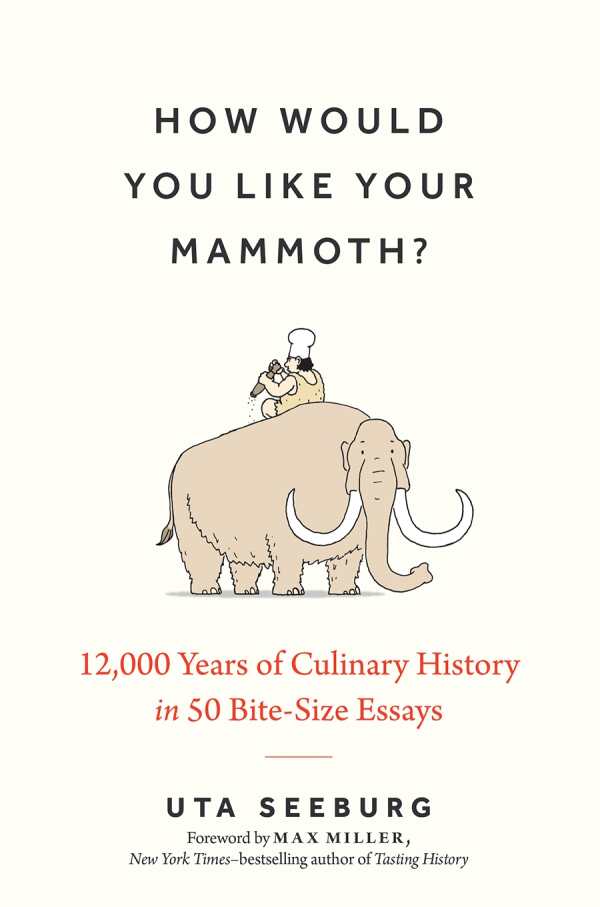How Would You Like Your Mammoth?
12,000 Years of Culinary History in 50 Bite-Size Essays
Pithy and enchanting, Uta Seeburg’s How Would You Like Your Mammoth? covers the advent of cookery in prehistoric and ancient civilizations, showing how food directs people and illuminates societies.
Seeburg asserts that food is a necessity that links everyone; thus, it’s an ideal introduction to broader historical topics. With the brevity of magazine columns, her accessible, lighthearted essays display a knack for finding curious similarities across eras and cultures.
A discussion of hunting folds into one on the boon of eating around a fireside. Syrian nomadic culture is used to reveal how hospitality protocols kept people together. In a similar manner, Ethiopian injera and the practice of hand-feeding choice morsels to fellow diners is treated as a symbol of devotion. And particular ingredients are handled as sources of national pride, medicinal solutions, and class differentiation: the dining spectacles of wealthy Romans and Baroque-era Europeans included pie crusts that masked live animals and fancy tablescapes. Opposite extremes like dieting are covered, too—as is the recent rising interest in home cooking and breadmaking attributed to COVID-19 lockdowns.
The earthy, communal aspects of food linger in the enthusiastic cornucopia of essays How Would You Like Your Mammoth?, a culinary history celebrating human ingenuity.
Reviewed by
Karen Rigby
Disclosure: This article is not an endorsement, but a review. The publisher of this book provided free copies of the book to have their book reviewed by a professional reviewer. No fee was paid by the publisher for this review. Foreword Reviews only recommends books that we love. Foreword Magazine, Inc. is disclosing this in accordance with the Federal Trade Commission’s 16 CFR, Part 255.

